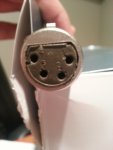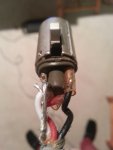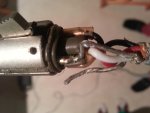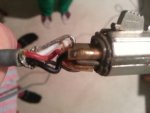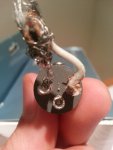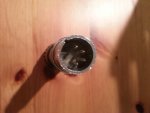saturatedistortion
New member
Hey guys,
I recently acquired an old dynamic microphone, there are no brand markings on it but appears to be from the 60's or possibly 50's. The output of the mic is fitted with a male Cannon XLR 4 11-C connector. I received this mic with it's original cable which has the female 4 pin on one end and a standard male 3 pin xlr on the other. When I plugged in the mic to my console I got nothing but buzz so I checked the ends of the cable connectors and sure enough some wires were loose on the male 3 pin. As of now i'm trying to figure out which wires to solder back to their respective pins since there are 4 separate wires including the shielding. Was wondering if somebody with some expertise could share some info with me. I'm really wanting to hear how this thing sounds! Thanks
I recently acquired an old dynamic microphone, there are no brand markings on it but appears to be from the 60's or possibly 50's. The output of the mic is fitted with a male Cannon XLR 4 11-C connector. I received this mic with it's original cable which has the female 4 pin on one end and a standard male 3 pin xlr on the other. When I plugged in the mic to my console I got nothing but buzz so I checked the ends of the cable connectors and sure enough some wires were loose on the male 3 pin. As of now i'm trying to figure out which wires to solder back to their respective pins since there are 4 separate wires including the shielding. Was wondering if somebody with some expertise could share some info with me. I'm really wanting to hear how this thing sounds! Thanks


